Avarekalu Upma (Karnataka Style Avarekai Upittu) is a popular breakfast dish from Karnataka. The key ingredient in this recipe is avarekalu beans, which add a delightful crunch and elevate the taste to a heavenly level—a healthy breakfast option for both kids and adults.
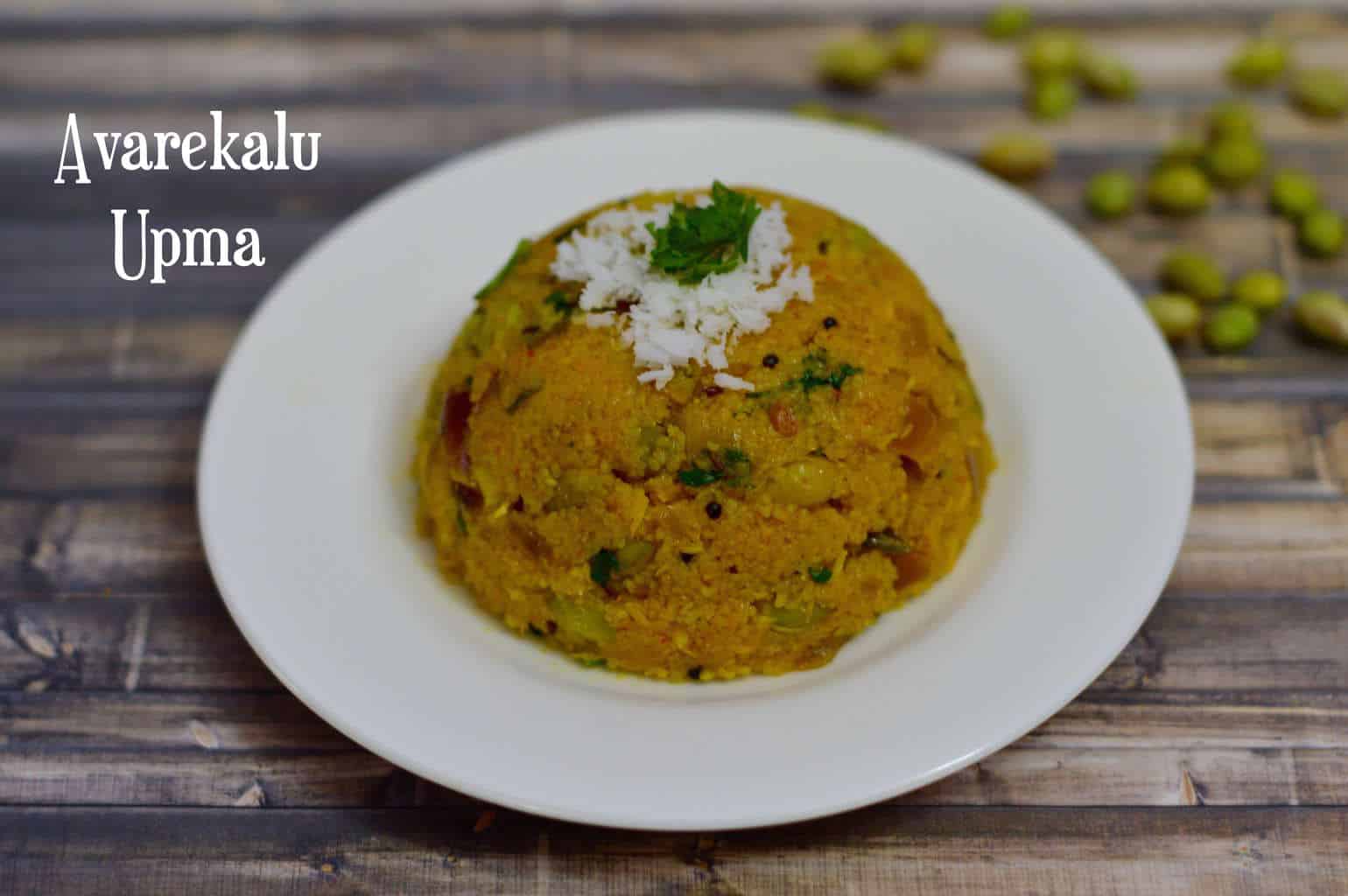
I grew up eating rava upma for breakfast, which my mom made at least once a week, and often served with coconut chutney. Other common breakfast staples at home included poha (avalakki), mandakki usli, semiyan upma (shavige upittu), idli, and dosa.
Today, I am sharing my mother-in-law's Avarekalu upma recipe, slightly different from the classic upma. She used to add avrekalu beans and vangibhath powder for a twist. If you don't have vangibhath powder, you can skip it in this recipe.
These beans are seasonal and primarily available during December and January in India. But these days, it's also available in Indian stores in the USA under the name 'Surti Papdi Lilva,' usually in the frozen section.
Traditionally, this upma is prepared using fresh avarekalu, but I went with the frozen packet as I couldn't get the fresh ones. But I can assure you it is not much of a taste compromise. However, I recommend buying the fresh beans in bulk and freezing them for later use.
You can find many upma recipes on this website, like dalia upma, oats upma, and samai (little millet) upma recipes.
Jump to:
What is Avarekalu called in English?
It is known as "Hyacinth Beans" in English and not broad beans. In Kannada, it's called Avarekalu, and Valor Papdi Lilva in Hindi.
It is often confused with Surti Papdi Lilva due to their similarities. Surti papdi is smaller, tender, and sweeter, while Valor papdi is larger, rough, and slightly bitter.
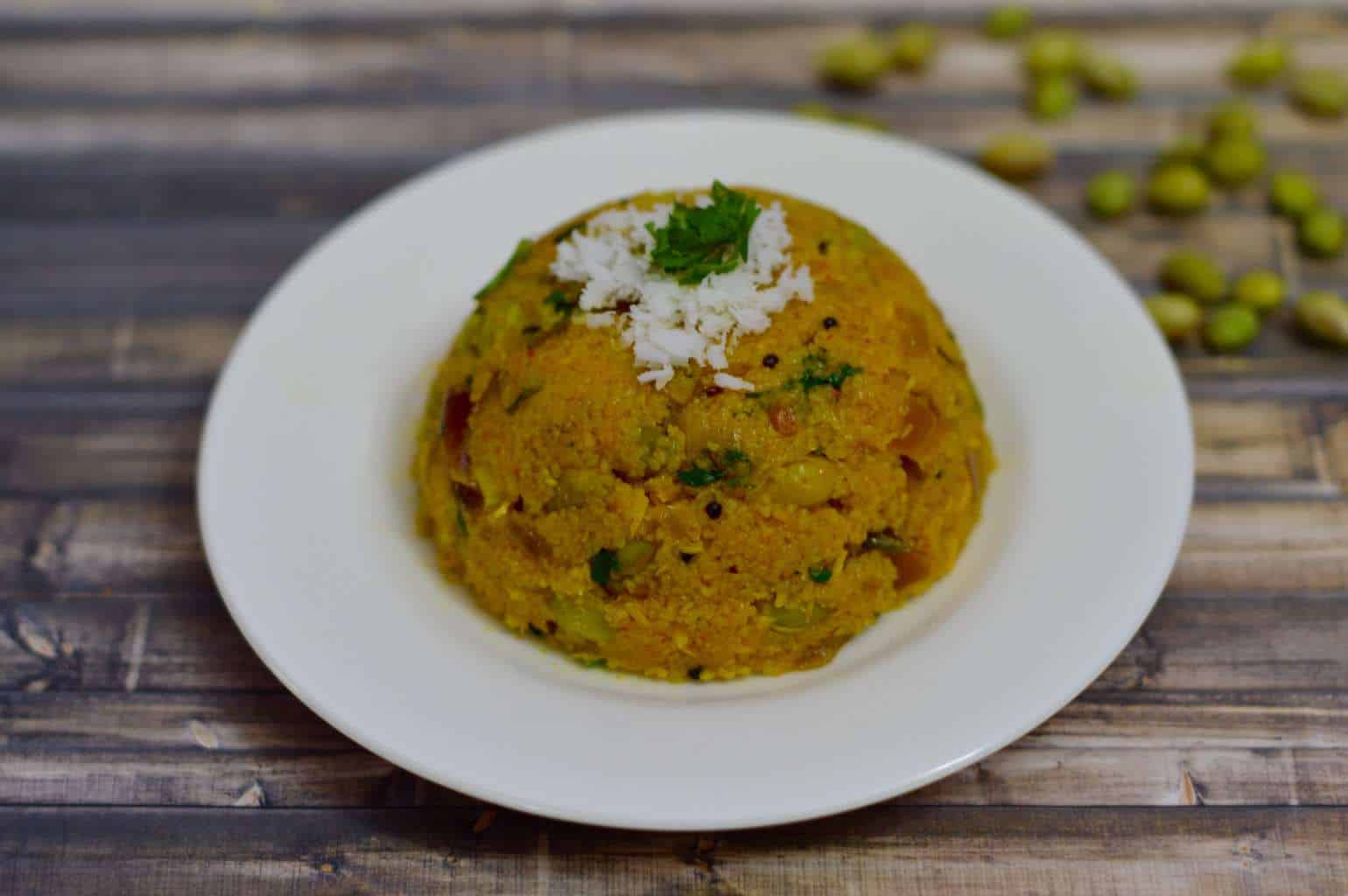
How to Make Avarekalu Upma
Dry roast ½ cup of bansi rava in a Kadai on medium-low heat, stirring continuously for 4-5 minutes until evenly roasted. Make sure the rava does not brown at the bottom, and look for a golden color and nutty aroma for a perfectly roasted rava. Transfer the roasted rava to a plate and set it aside.
Pre-roast the sooji or use store-bought roasted rava in advance to save time on busy mornings.
Cook ¾ cup of avarekalu with salt in boiling water until soft, then keep aside.
Note: I used frozen avarekaalu from the Indian store, so I boiled it for just 5 minutes. You can microwave it as well for convenience.
Heat 2 tablespoons of oil in a Kadai on medium heat. Add ½ teaspoon mustard seeds, ½ teaspoon jeera, and then let the mustard seeds crackle.
Then add ½ teaspoon split urad dal, 1 pinch of hing (asafoetida), 1 stalk of curry leaves, 1 green chili (finely chopped), and saute until the dals change color.

Next, add 1 medium onion (finely chopped) and saute till it turns light brown.

Add boiled avarekai, ¼ teaspoon turmeric powder, 1-2 teaspoon of vangi bath powder, salt to taste, ½ teaspoon sugar (optional), and cook for 2-3 minutes till the raw smell of avarekalu goes away.

Add 1 ½ cups of water to the mixture and bring it to a boil. After the water comes to a boil, add roasted rava a little at a time and continuously stir using a wooden spatula to avoid lumps.
Always follow a 1:3 ratio — for every 1 cup of rava, add 3 cups of water.

Cook covered for about 2-3 mins on medium-low flame until the water is fully absorbed. Once done, add 1 tablespoon of lime juice, 2 tablespoons coriander leaves, 2 tablespoons grated coconut, and a little homemade ghee and mix well. Remove from stove and serve hot.

What to Serve with Avarekalu Upma?
Serve Avarekalu upittu with coriander coconut chutney, peanut chutney powder, and a cup of filter coffee.
Variations
- You can use bombay/chiroti rava (white-colored sooji)
- If you don't have vangibath powder, replace it with rasam powder or (red chili powder + coriander powder), or skip it.
- You can replace avarekai with edamame beans. You can also add mixed vegetables like green beans, carrots, and potatoes.
- Add more green chilies If you like spicy upma.
Expert Tips
- Avoid burning the rava by roasting it on medium-low flame and stirring continuously.
- Fresh avarekalu tastes much better than frozen ones.
- Rava to water ratio should be 1:3 for soft and yummy upma.
- I also like to add 1-2 teaspoons of ghee at the end to enhance the flavors; however, it's optional.
Recipe FAQs
There's a huge variety of sooji/semolina/rava available in the market. The most commonly used are bansi rava and bombay sooji rava, which are readily available in Indian grocery stores or Amazon. I have used roasted bansi rava for this recipe.
Both kinds of semolina (rava) are obtained from wheat but different varieties. Bansi rava is darker in color than plain sooji rava. Both are coarsely ground forms of wheat, whereas sooji rava is a finer version of the two.
Bansi rava is quite popular in Karnataka and in many other South Indian homes. In northern and western India, rava is used to make sooji halwa, sooji kheer, upma, dhokla and is also added to bhatura and poori dough whereas, in South India, rava is used to make instant rava idli, quick rava dosa, rava uttapam, kesari bath, rava ladoo, and upma.
More Indian Breakfast Recipes
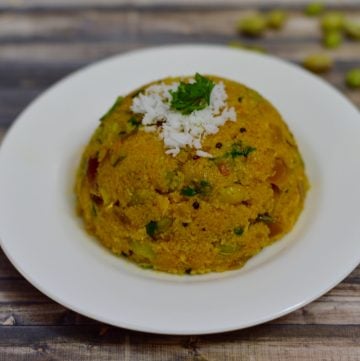
Avarekalu Upma (Karnataka Style Avarekai Upittu)
Ingredients
- ½ cup sooji rava/semolina ( I used bansi rava)
- 1 medium onion finely chopped
- ¾ cup avarekai (surti papdi lilva) (boiled and cooked in salted water)
- 1-2 teaspoons vangi bath powder ( I used MTR brand)
- ½ teaspoon mustard seeds
- ½ teaspoon cumin (jeera seeds)
- ½ teaspoon split urad dal
- 1 green chili slit lengthwise
- 1 stalk curry leaves
- 1 pinch hing (asafoetida)
- ¼ teaspoon turmeric powder (haldi)
- ½ teaspoon sugar (optional)
- 2-3 tablespoons oil
- 1 ½ cup water
- 2 tablespoons coriander leaves
- 2 tablespoons grated coconut
- 1 tablespoon lime juice
- salt as per taste
Instructions
- Dry roast bansi rava in a Kadai on medium-low heat, stirring continuously for 4-5 minutes until evenly roasted. Make sure the rava does not brown at the bottom, and look for a golden color and nutty aroma for a perfectly roasted rava. Transfer the roasted rava to a plate and set it aside.Pre-roast the sooji or use store-bought roasted rava in advance to save time on busy mornings.
- Cook avarekalu with salt in boiling water until soft, then keep aside.Note: I used frozen avarekalu from the Indian store, so I boiled it for just 5 minutes. You can microwave it as well for convenience.
- Heat oil in a Kadai on medium heat. Add mustard seeds and jeera, and then let the mustard seeds crackle.
- Then add split urad dal, one pinch of hing (asafoetida), curry leaves, green chili, and saute until the dals change color.
- Next, add finely chopped onion and saute till it turns light brown.
- Add boiled avarekai, turmeric powder, vangi bath powder, salt to taste, sugar (optional), and cook for 2-3 minutes till the raw smell of avarekalu goes away.
- Add 1 ½ cups of water to the mixture and bring it to a boil. After the water comes to a boil, add roasted rava a little at a time and continuously stir using a wooden spatula to avoid lumps.Always follow a 1:3 ratio — for every 1 cup of rava, add 3 cups of water.
- Cook covered for about 2-3 mins on medium-low flame until the water is fully absorbed. Once done, add lime juice, coriander leaves, grated coconut, and a little homemade ghee and mix well. Remove from stove and serve hot.
Notes
Expert Tips
- Avoid burning the rava by roasting it on medium-low flame and stirring continuously.
- Fresh avarekalu tastes much better than frozen ones.
- Rava to water ratio should be 1:3 for soft and yummy upma.
- I also like to add 1-2 teaspoons of ghee at the end to enhance the flavors; however, it's optional.
Variations
- You can use bombay/chiroti rava (white-colored sooji)
- If you don't have vangibath powder, then replace it with rasam powder or (red chili powder + coriander powder), or skip it.
- You can replace avarekai with edamame beans. You can also add mixed vegetables like green beans, carrots, and potatoes.
- Add more green chilies If you like spicy upma.
Nutrition
★ Like this recipe? FOLLOW ME on Facebook, Instagram, Pinterest, and Youtube for more quick & easy recipes.

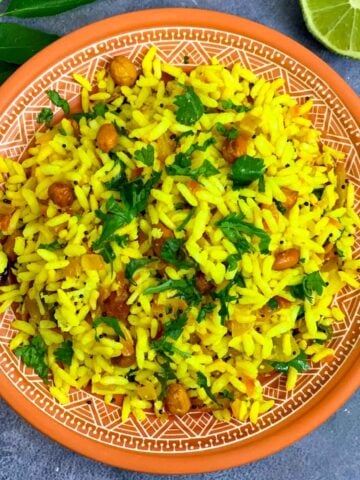
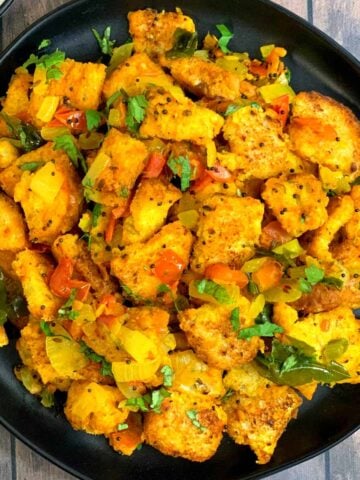
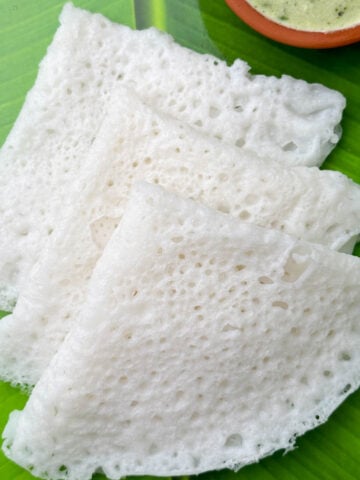
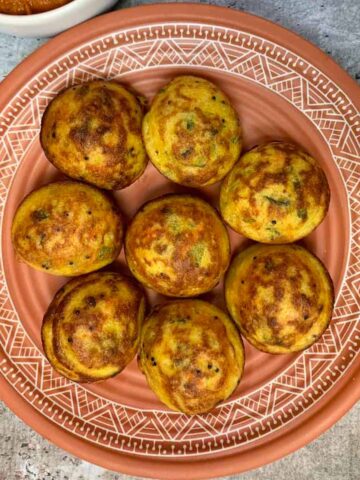
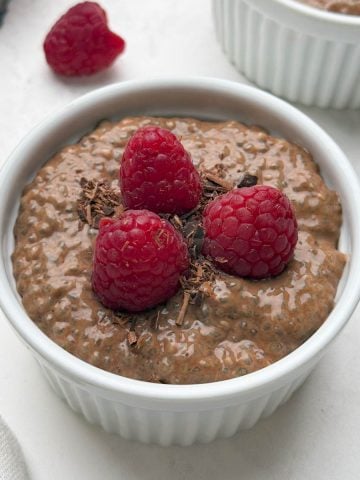

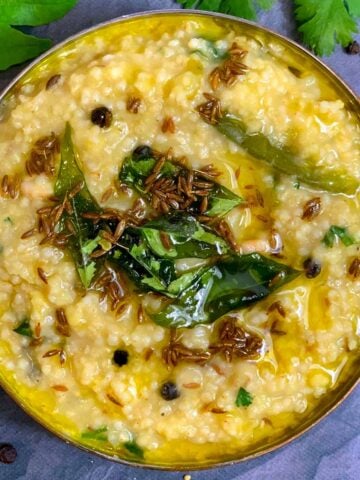
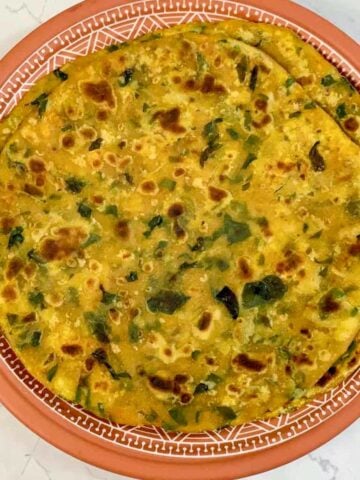
Urmi
This upma turned out to be really tasty and nutritious, I am a Gujarati so we use surati papdi lilva in a lot of preparations. This is a really easy and quick as well as protein filled recipe. Thanks so much for sharing this. I am a regular user of websites for authentic Indian recipes but this is the first time I was compelled to write a comment.
Bhavana Patil
Hi Urmi. I am so glad you liked the recipe. Thank you for writing this comment and sharing your feedback.
Yeah Surti papdi lilva or valor papdi work for this recipe.